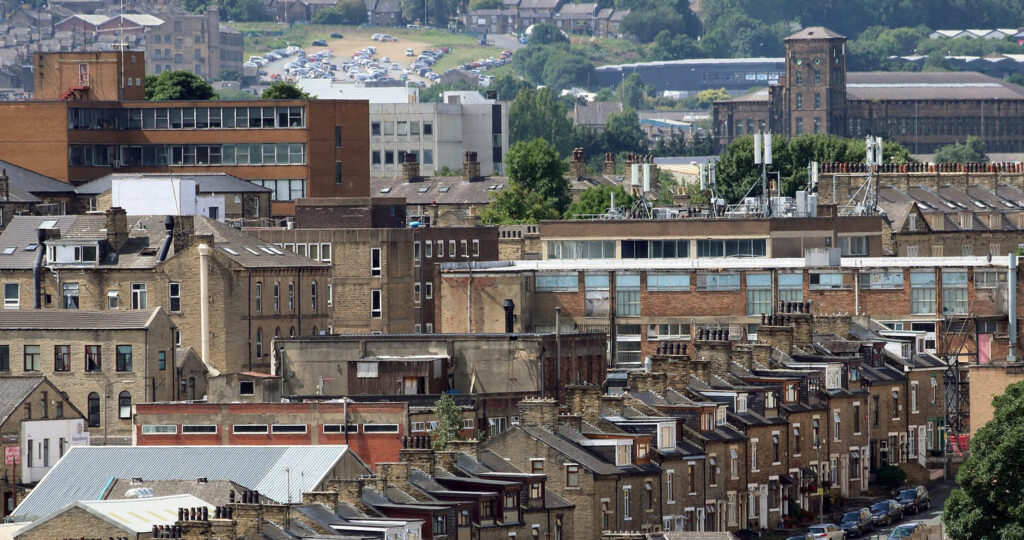The Subplot
The Subplot | Northern retail rates, devo deals, Gove concessions
THIS WEEK
- Centre for Cities’ Paul Swinney examines what retail rental rates can tell us about property markets in the North
- Elevator pitch: your weekly rundown of what is going up and what is heading the other way

BUSINESS RATES REFLECT MARKET CONDITIONS SHOCKER
Christmas has come early. The Valuations Office Agency has finally updated the rateable values of all properties in England and Wales that it uses as the basis to calculate business rates. It’s only six years after the last one (by way of comparison, the Dutch do it every year), but better late than never. It also tells us some interesting things about what’s going on in property markets across Northern cities and towns.
Retail rents are down, especially in city centres
The least surprising revelation is that retail rents are down across the board, especially in town and city centres. Across the 21 largest city centres in the North of England, rateable values were down 26%, larger than the 12% fall seen in their surrounding suburbs.
The place with the smallest fall was Barnsley town centre, where values dropped by just 14.5% compared to the previous valuation six years ago. The places that saw the largest drops were the centres of Middlesbrough (down 39%) and Bradford (down 40%). That’s quite some reset.
While declining property values are a result of declining demand, they do at least finally bring beleaguered high street retail some relief. England and Wales’ tardy process of revaluing properties means that those retailers who have to pay rates (your favourite independent most likely is exempt from rates – be sure not to fall into that trap when arguing how business rates hurt the high street) have been overpaying for years. That’ll be corrected from next year. A crumb of comfort for retailers in Bradford city centre.
There isn’t much better news for other parts of the high street
Things don’t look much better for the other occupants of Northern high streets. Food and drink (which doesn’t include pubs and hotels because their rateable values are calculated differently) also fell across all but two centres. Going against that fall in retail values, food and drink property rents in Middlesbrough town centre went up 3.6%. There’s no such silver lining for beleaguered Bradford city centre though, as it also saw the largest fall in food and drink values.
Offices are still in demand
Demand for office space is on the rise across most centres, despite opposite predictions during the pandemic. Manchester city centre leads the pack, with a 28% increase in rents. This was the fifth highest increase of any city centre in England and Wales, and well above the 6% in central London. Preston takes a surprising second spot, with office rents up an estimated 23% on 2017. There’s yet more bad news for Bradford and Middlesbrough though, with both again taking the bottom two spots (a 7% and 12% fall respectively).
And warehouse space is becoming more expensive
In what will no doubt come as welcome news for defenders of the high street, the cost of warehouse space is also on the up, increasing both the rents and business rates bill that online retailers will need to pay. In the North they are on the rise most in the North West – Hyndburn comes out on top, with rateable values up 65%. Tameside and Rossendale follow. In fact, 19 of the top 20 local authorities for increases in warehouse costs are in the North West. Sunderland, at 45%, is the lone entry from elsewhere in the North. Meanwhile 14 of the bottom 20 are in Yorkshire & the Humber, with Ryedale seeing the smallest increase (6%).
All I want for Christmas is business rates reform
It’s likely, given the looming recession, that these valuations will be out of date even before they come into force in April 2023. Occupiers will then be burdened with them (notwithstanding an appeal) for another indefinite time before the powers that be decide that it might be a good idea to value the market again. In the meantime, occupiers of property that has dropped in value will pay a higher level of tax that is based on out-of-date market values.
This, of course, isn’t as bad as council tax, which quite ludicrously is based on early 1990s values, but it’s nowhere near that Dutch best case of annual updates that ensure tax moves broadly in line with the market.
There are quite a few other things that don’t work very well in the business rates system, but many of its problems flow from this tardy updating of the value of the properties it is taxing.
Please Santa, let 2023 be the year when policymakers finally make the business rates system fit for purpose, even if that means just revaluing properties more often.
I won’t hold my breath.
For more on business rates, see the Insight column from Place North West’s resident experts at Roberts Vain Wilshaw.
 ELEVATOR PITCH
ELEVATOR PITCH
Going up, or going down? This week’s movers
Devo deals are back, while the debate around housebuilding targets rages on.
 Devolution
Devolution
There has been a bit of a hiatus to the ‘devolution revolution’ since Greg Clark slipped out a couple of devolution deals as nightwatchman at BEIS before Liz Truss’s Government swooped in. But a flurry of snow has brought with it a flurry of new deals. We’ve had an extension for Cornwall and the announcement of deals for Norfolk and Suffolk. So the devolution process is back on track. A common theme? They all will have a directly elected ‘leader’ (aka a mayor). Food for thought for those in Lancashire wanting a devo deal without a change in governance.
 Rebel Tory MPs
Rebel Tory MPs
After pressure from a group of rebel Tory MPs looking to amend the Levelling Up and Regeneration Bill, who, seemingly have the goal of making it even more difficult to build new homes, Michael Gove has offered them a number of “concessions”. The main wrangling has been over whether there should be a headline target set by national government for housebuilding, with the rebels pushing for it not to be mandatory. Gove conceded on this point. Or did he? Read the guidance and you’ll see that these targets weren’t mandatory in the first place.
Get in touch with Place North West news@placenorthwest.co.uk
The Subplot is brought to you in association with Oppidan Life.






There is an increasing East/West divide in the North. This has been apparent for some years, with the West outperforming the East.
By Elephant
And there`s an East-West divide in the NW.
By Anonymous